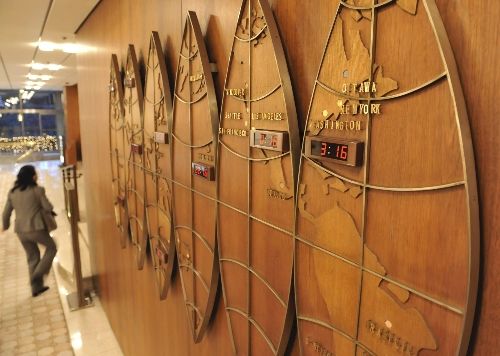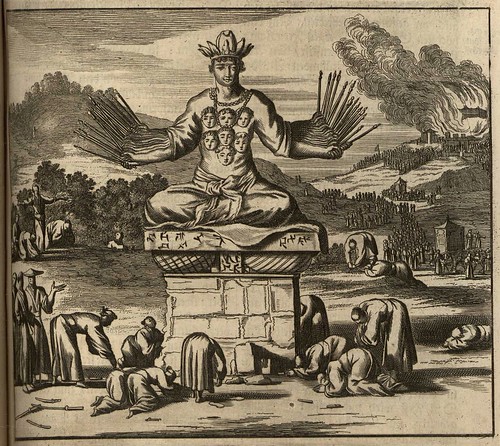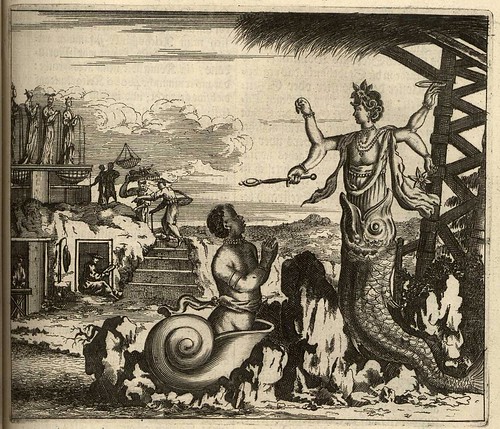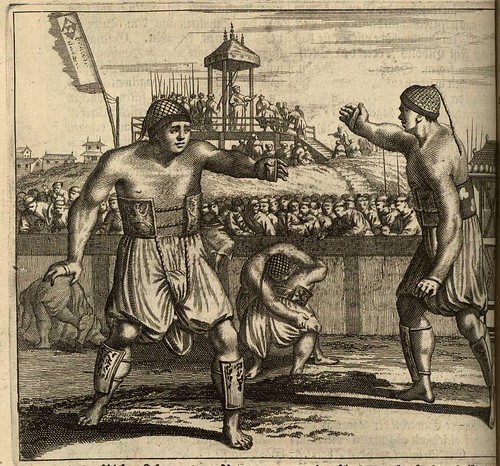After my mishap last week I made sure to get to the airport about two hours earlier than I needed to, and so naturally the plane was an hour late-which would have easily more than made up for the amount of time by which I had missed my plane last week.
I found a place to crash for the night in the backpacker/tourist district near downtown Manila as it is not too far from the airport, although I will be staying for the next couple of days in the University of the Philippines area up in Quezon city, about an hour away from the airport.
I took a brief stroll around the area after checking in to pick up some toiletries at a 7/11 and grab a snack. This is not the nicest part of Manila to walk around at night, as you have to dodge both men trying to sell you women and women trying to sell you themselves. Even if that had been the goal of my walk, as opposed to toothbrush and stuffed bread thing, I am perfectly capable of reading signs and walking into a store and don’t need anyone following me and gabbing in my ear, thank you very much.
In the morning I took another stroll around to get breakfast, and instead of being accosted by pimps and whores met with watch and viagra merchants. Shouldn’t the viagra sellers be out when the prostitutes are? Doesn’t anybody coordinate their schedules? Such are the mysteries of the cosmos.
Walking around with my new camera, I was reminded of one of the peculiarities of the Philippines, being that a foreigner wielding a fancy camera will actually be stopped by locals asking you to take their photograph. “One shot, right here.” They say. Needless to say, this is the reverse, or at least crossverse, of the usual relationship between the tourist photographer and the busy local. It takes a few times, initially, to realize that there is no scam, no demand for money involved, but merely some globally rare but nationally common enjoyment of the experience of being documented.
After being called upon to photograph one smiling old man-a pleasant enough interaction-I had the misfortune of stepping on a sidewalk stone which shifted in a downwardly spinning fashion beneath my foot, plunging it into the murky sewery depths beneath, soaking my foot and mildly scraping my shin. A couple of people on the sidewalk nearby hurried over to ask if I was all right, and no serious harm done I said that I was, as one man hawking cigarettes nearby shifted the slab back into a less precarious place.
Just before getting back at the hostel (whose wifi I am currently perusing) I stopped to briefly admire a well-maintained fire truck parked on the street, whereupon I was greeted b its crew, relaxing at the side of the street across from it. Exchanging hellos, they asked me where I was from, I told them “US, New Jersey, currently studying in Japan”, the usual introduction, following which I become absorbed into a nearly hour-long conversation with one of the men. They were volunteer fire fighters, not city employees, and even the fire truck is privately owned. I saw a Rotary Club emblem on it, presumably one source of funding.
This man, whose name I will not mention for reasons that will be apparent, looked to be in the general neigborhood of 30. When I started to expain to him that I was studying the area of colonial history he gave his widely-shared opinion that education was the best thing that America had given to the Philippines. He then followed up by expressing dismay that America and the Philippines, having been engaged in building a system of education generally maintaining a high level relative to the region, had not carried those high standards into the realm of Philippine history, choosing instead to present a slanted and incomplete version of that history, particularly where the Community Party of the Philippines is concerned.
He asked me if I had heard of Jose Maria Sison, which I had. Sison, now elderly and living in political exile in The Netherlands, is the leader of the CCP who has written many revolutionary tracts over the years. I mentioned that I have one of his books, “Philippine Society and Revolution”, written in the 1970s, which I had downloaded from a website. I mentioned that I had read more of Renato Constantino, the most famous left-wing historian of the Philippines, to which he replied, “well he’s OK too,” clearly indicating a strong preference for the writings of Mr. Sison. Out of both interest and politeness I then asked where I might find some more of Sison’s writings, to which the reply was “well, for that you have to go up there” by which he meant, to the mountain camps where the communists hide out and train. His writings are banned in the Philippines, and cannot be bought or sold or even possessed openly.
He, or perhaps I should say The Young Communist, which is what he gradually and eventually came out as, was originally from Manila, of middle class background. Of partial Chinese descent, his grandfather had married a non-Chinese Filipina and been disowned, which says enough to The Young Communist about Chinese society for him to want no part of it. He went to Polytechnic University of the Philippines,which he described as the second most communist university in the country after UP (University of the Philippines), where he had been recruited by one of his professors. UP, he said, while containing the highest proportion of communists and communist sympathizers, is also by far the most elite and wealthiest of the nations universities, with over 80% of the student body themselves coming from an elite background. While people there may be intellectually communist, and may even join the struggle, they will never have the full level of understanding of the need for revolution possessed by those of a more humble background. “Poverty is part of the education.”
He had then spent his university career traveling back and forth between the city, where he studied in class, and the mountain regions, where he studied in the communist camps. He never lived full time in the mountains, because (and he stressed this) he “never had a job up there” due to not being a member of the armed struggle. Instead, he studied comunist philosophy and methods for organizing and activism, and worked in some aid programs for the aborigines. The aforementioned writings of Sison were studied, but he said he would always shred or burn a copy after reading it.
After university, he stopped going to thee camps in the mountains to concentrate on work in the city. He mentioned that there was some sort of amnesty for CCP memberss, which applied to him perhaps since he was not in the armed faction-I did not adequately get the details. The Young Communist then gestured at the fire truck saying that it was part of his work, to do something for the community. While he does consider himself a communist and refers to other communists as “comrades”, he is pragmatic and considers himself a realist. He says he works for revolution, but not in the radical and dramatic sense of a popular uprising and the establishment of a People’s Republic, but in the sense of changing the social order in a gradual and peaceful fashion. To this end he is involved in organizing in the labor movement and in the promotion of revolutionary art, and even the volunteer fire fighter duty, and makes money to live off doing some kind of event organizing thing, which I got virtually no sense of due to his clear lack of interest in talking about work when he could be talking about the real work.
Having seen the results of revolutions throughout the 20th century, he does not believe that an armed uprising will actually improve things long-term except, and here I dare to presume, in the case of a violent and oppressive dictatorship. He had particular venom and bile for Marcos, whom he considers perhaps the worst person in modern Philippine history-a statement that many would agree with. In his view, following the 1986 EDSA People Power Revolution, which toppled Marcos, there was a window of opportunity for real reform, which was squandered and undermined by the same old elite, and each president since Corey has only been worse. Like many here, he bemoans the fast that the best and brightestt and most educated leave the Philippines behind to go work in the US or other foreign countries, which “is bad for the Philippines on a macro level, but you really can’t blame them for taking care of their families” even as it continues the cycle of underdevelopment.
While I can understand how an espoused communist might not be in favor of armed struggle for both moral and pragmatic reasons, I am both startled and puzzled to hear him say that he considers Marxism to be unrealistic and Marxists to be mistaken. When he goes on to say that national democracy is the only framework that makes sense to work within for the foreseeable future, I am left wondering what actually makes him a communist as opposed to merely a very progressive liberal. What, aside from self-identification, is different from my own views? We seem to have similar views on both history and current events. Neither of us is calling for the overthrow of the state, but think that dynasty in electoral politics (a far more serious problem in the Philippines, but one that is distressingly on the rise in the US) is unforgiveable. Perhaps he has a dream of some distant communist society, but what person with any spark of imagination and optimism doesn’t fantasize about a future utopia? I certainly don’t pretend to think that any society in existence in the world today, however much better things may be now than in the past, is more than a shadow of things to come. But I also don’t pretend to have any glimmer of what future society might be, as fun as it is to guess or imagine. And I wonder, does The Young Communist even believe in communism? Does it matter? If someone can follow a religion-say Christianity-as a set of moral guidelines but not a literal description of history or roadmap to the future, why can’t someone calling themselves Communist approach that doctrine in the same way?




